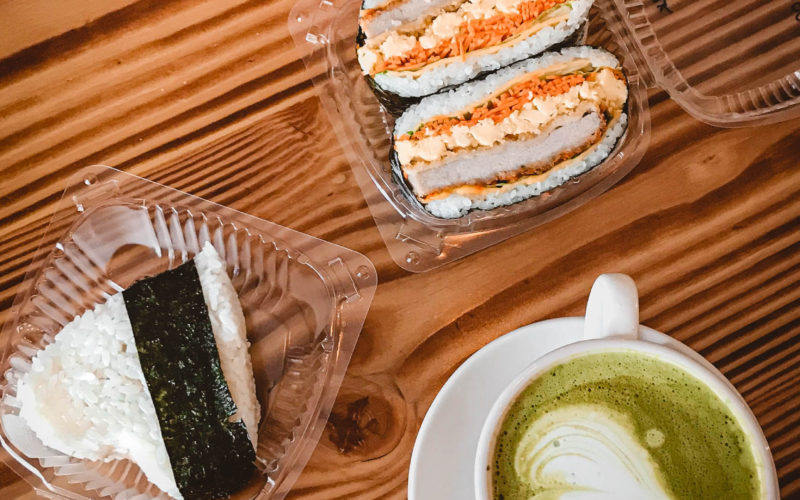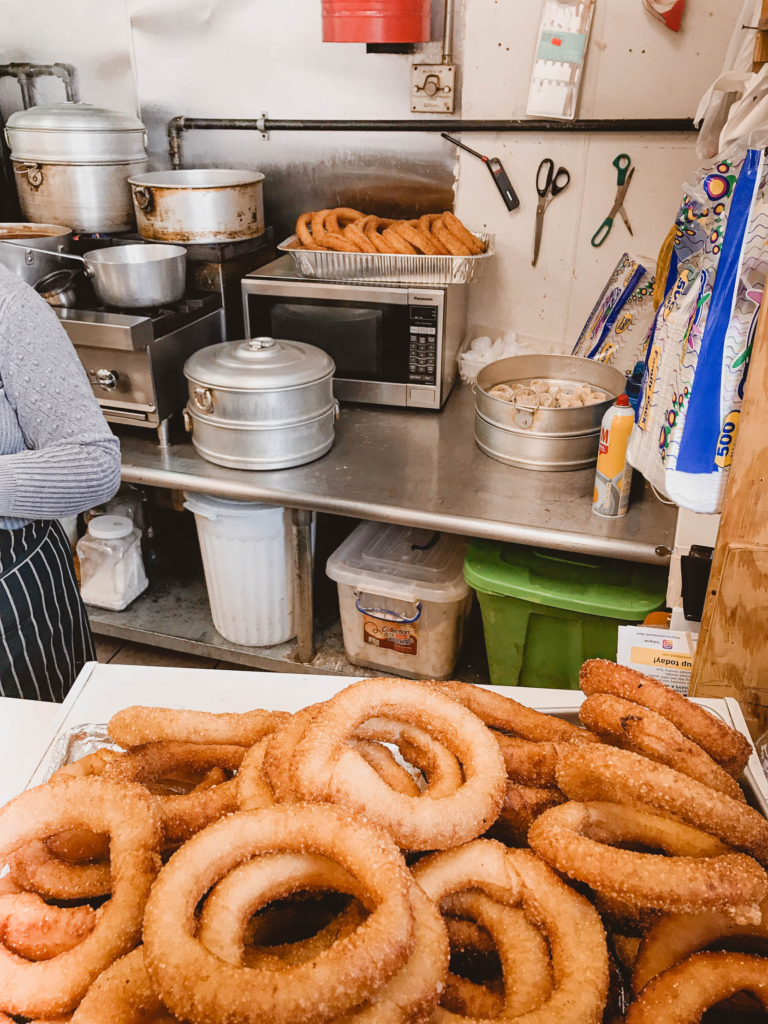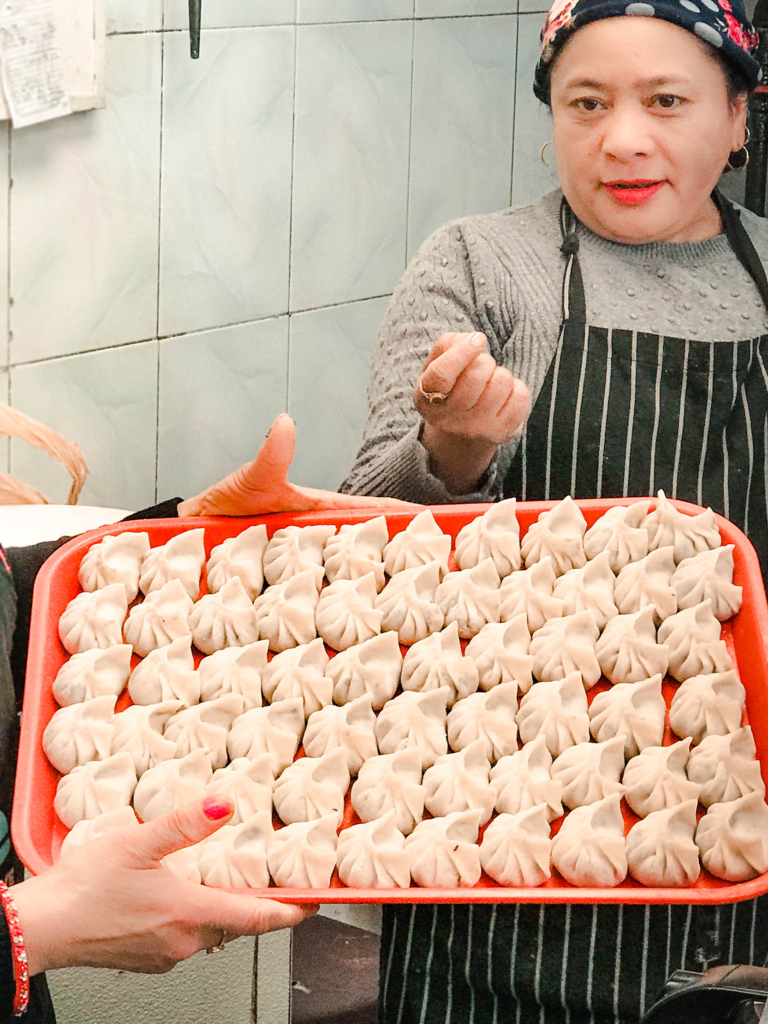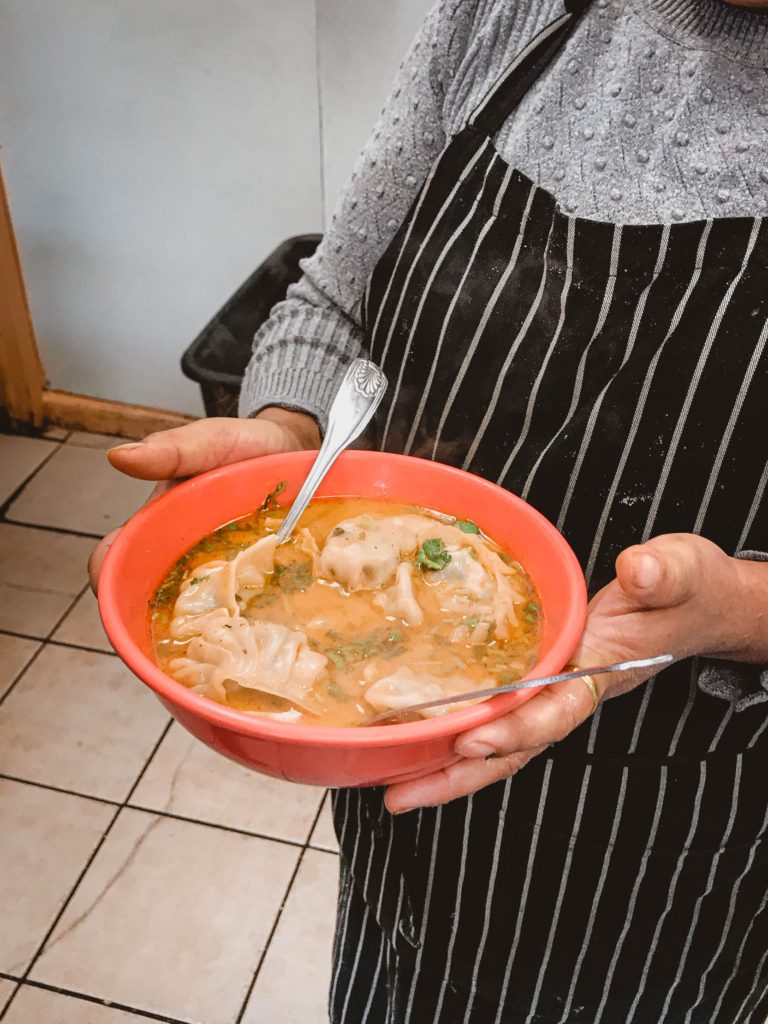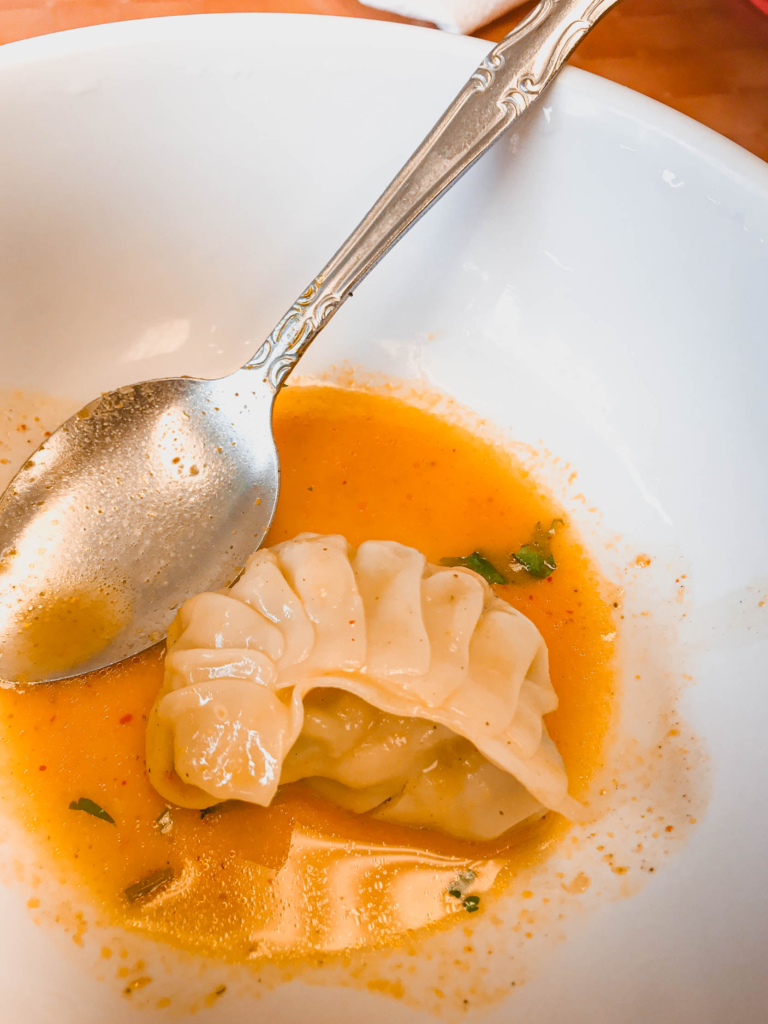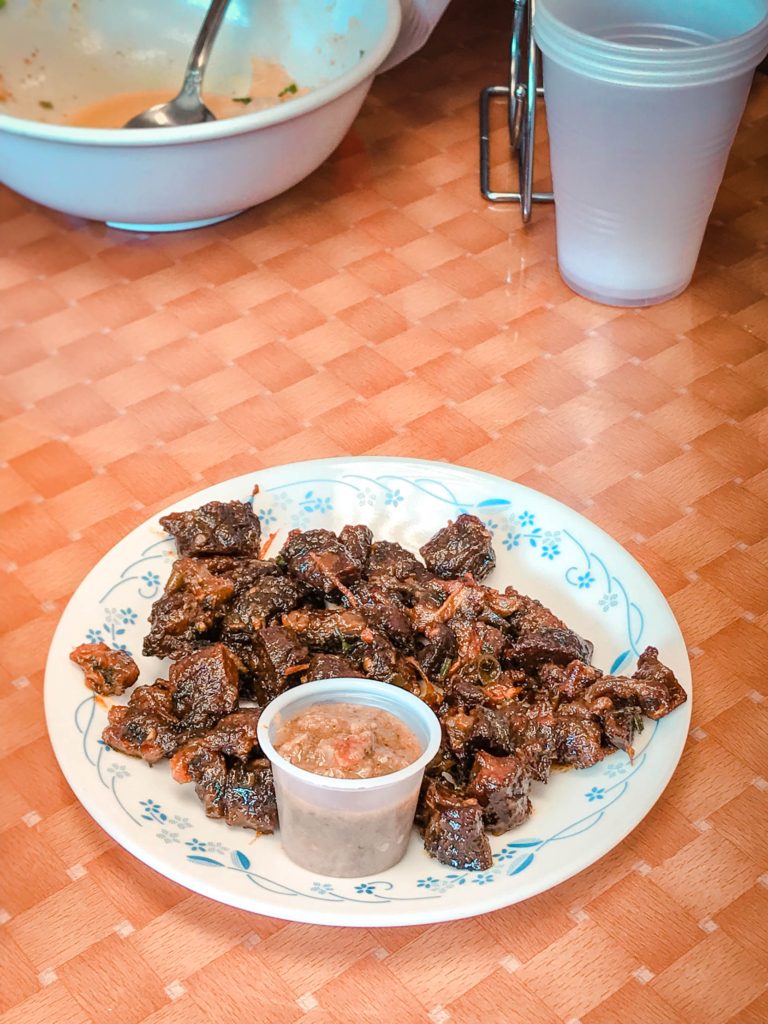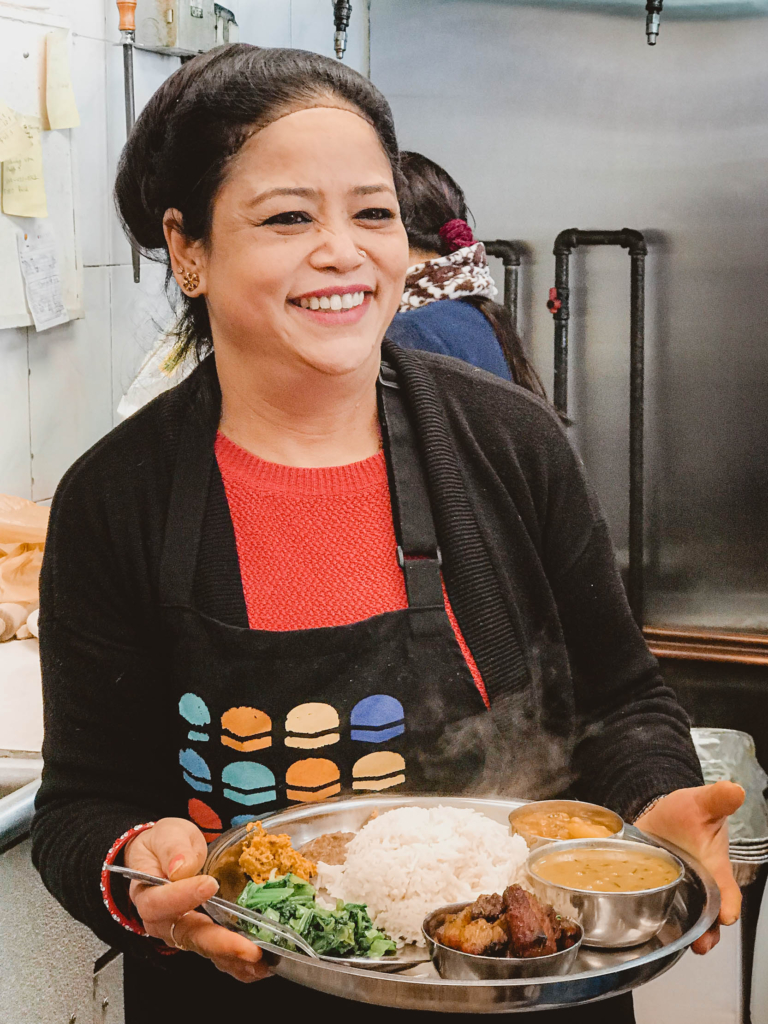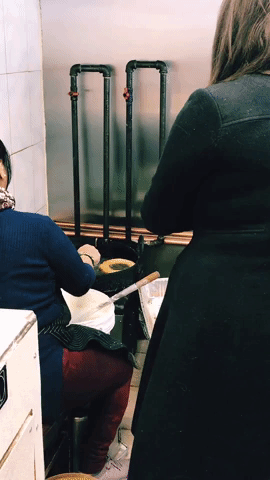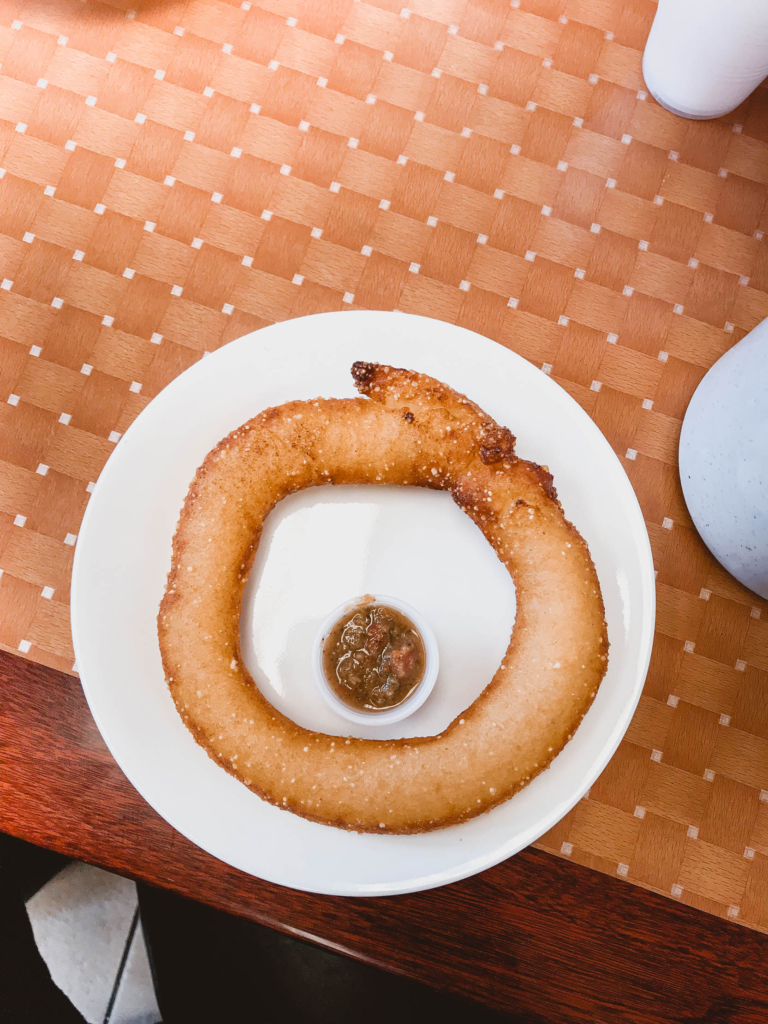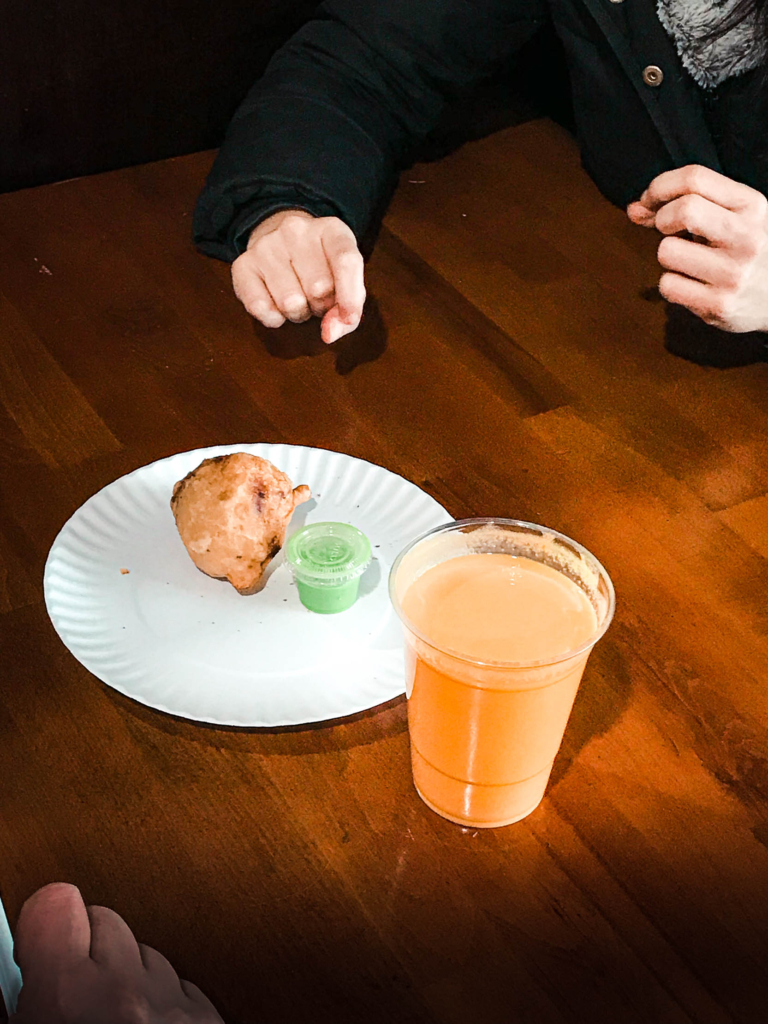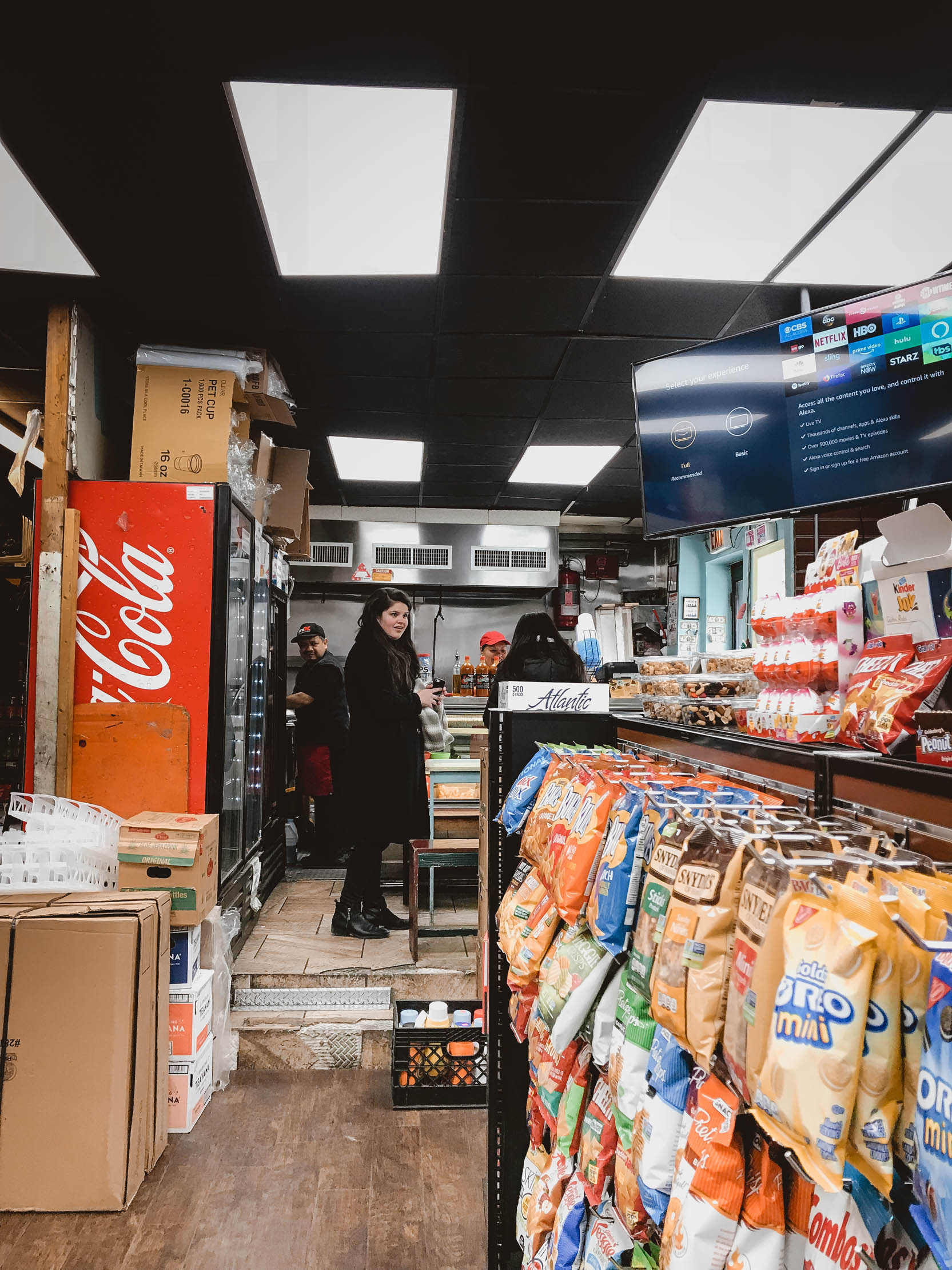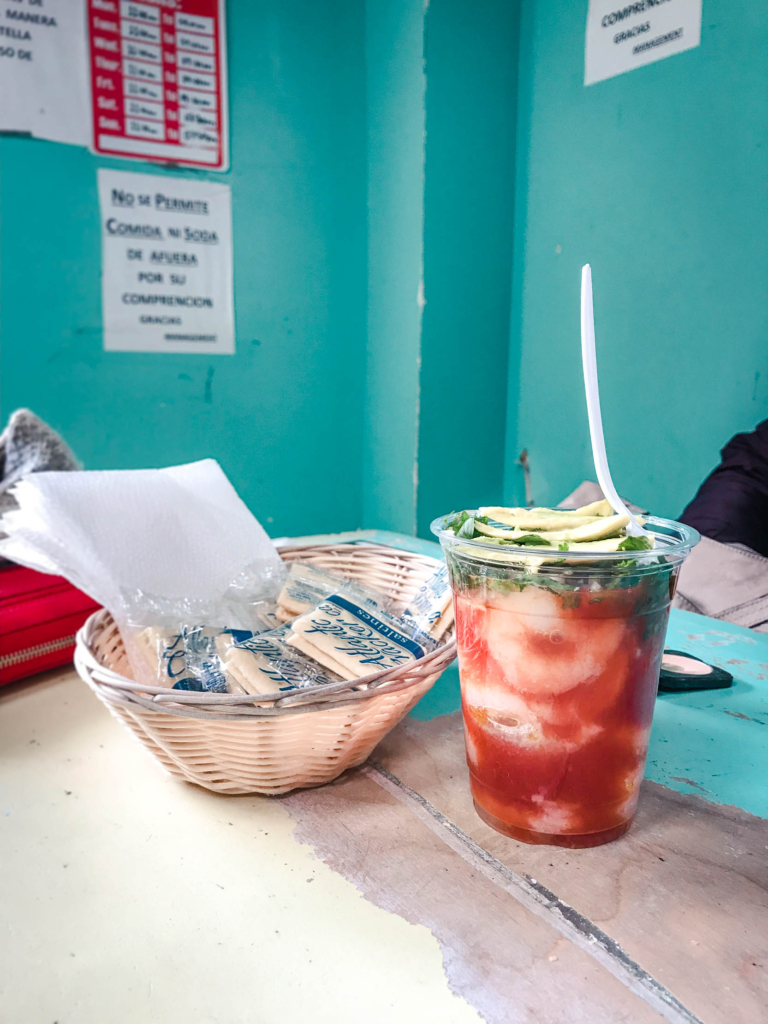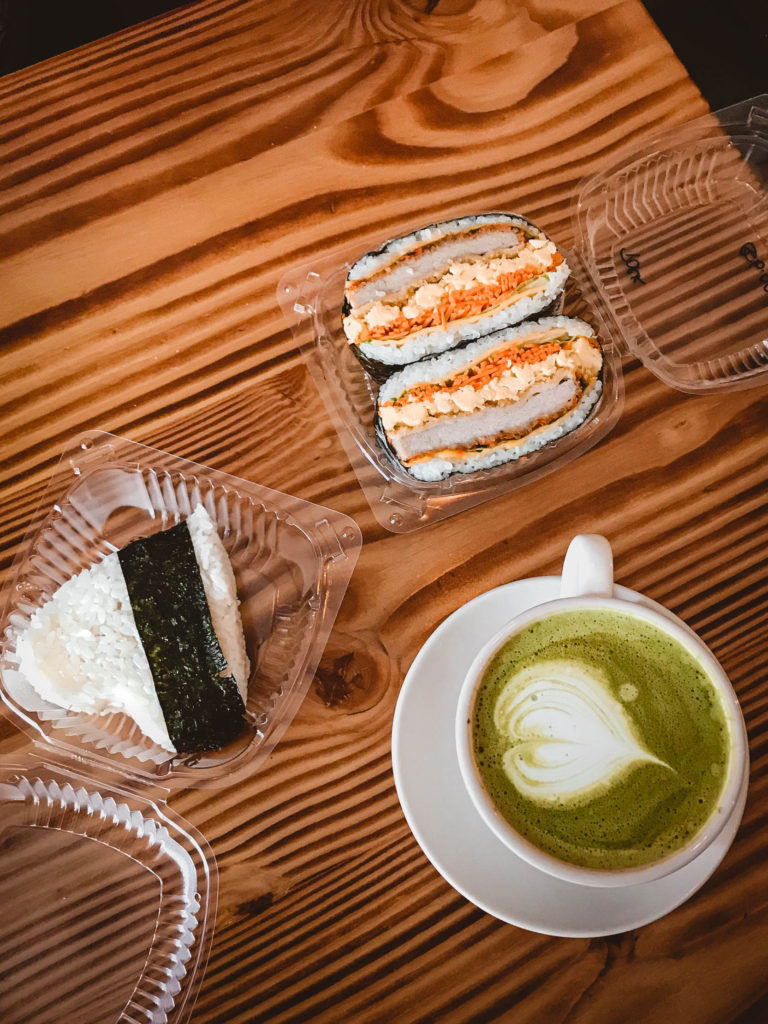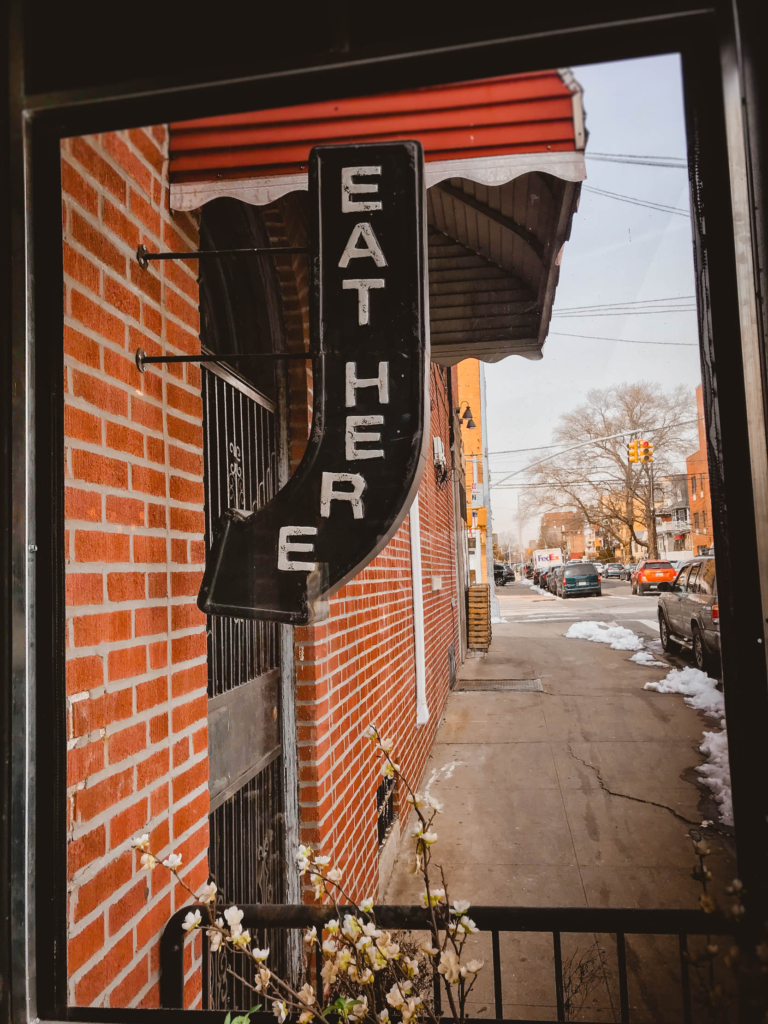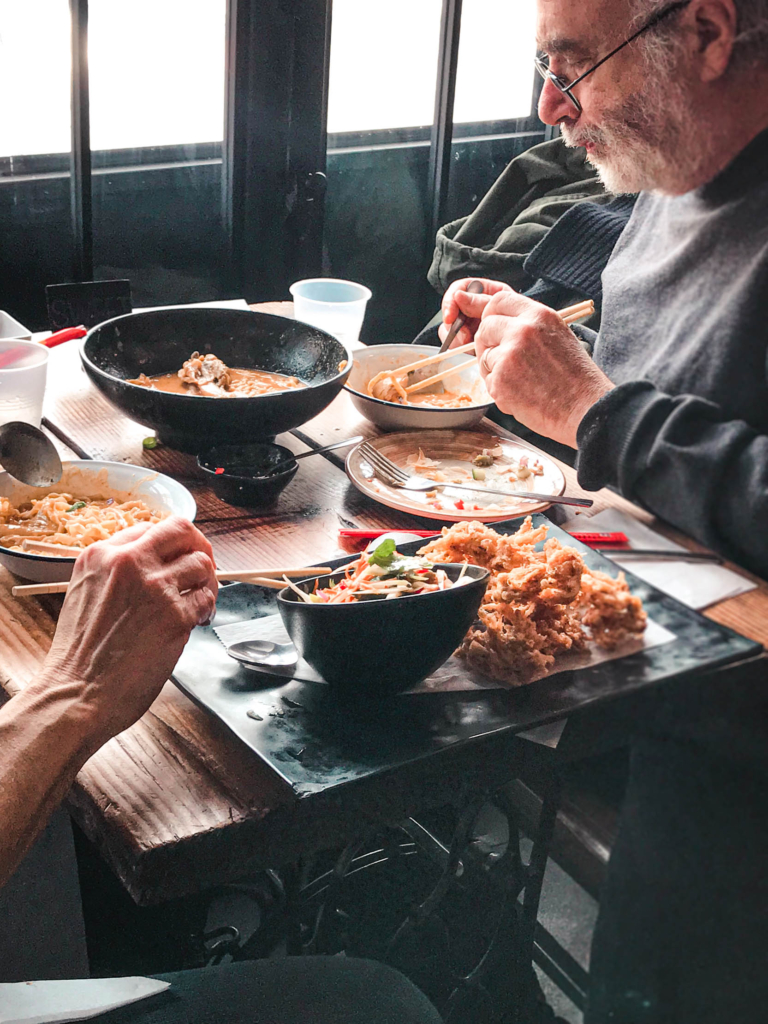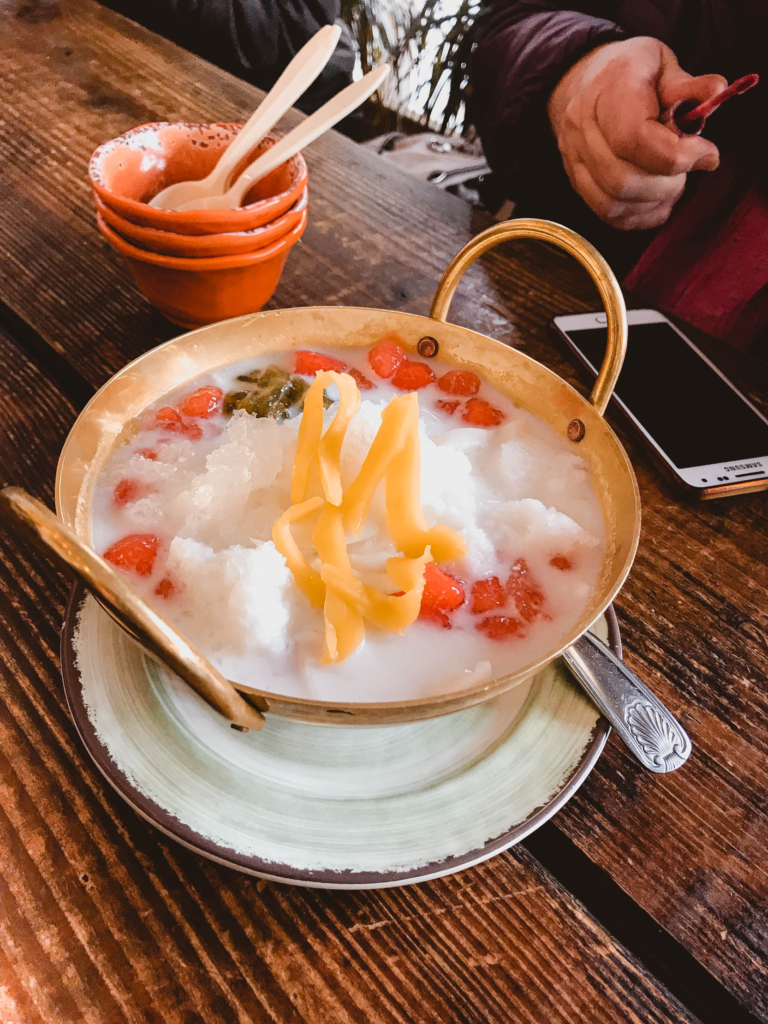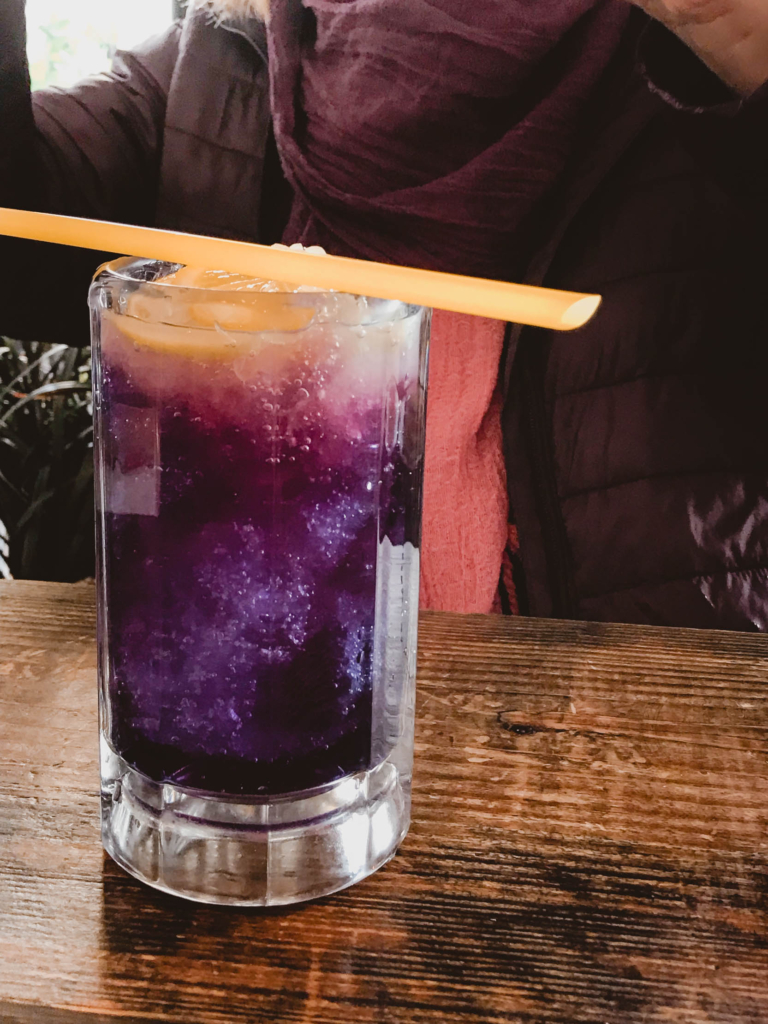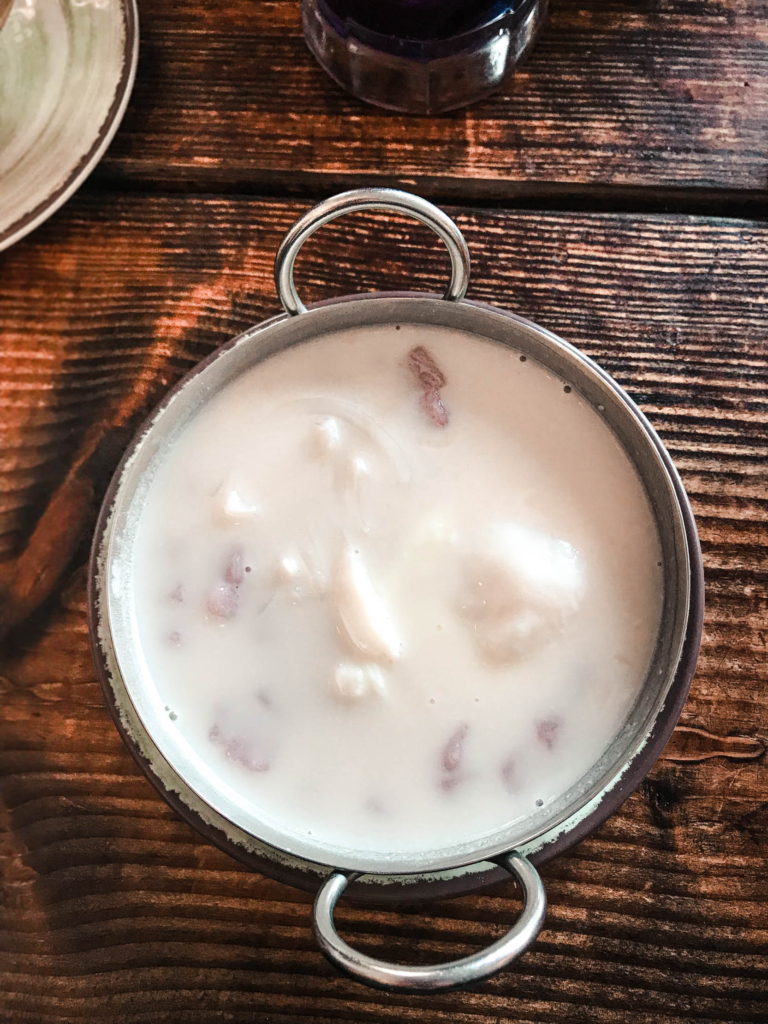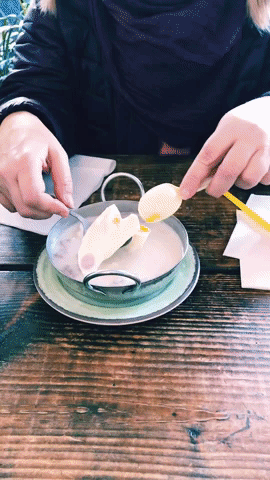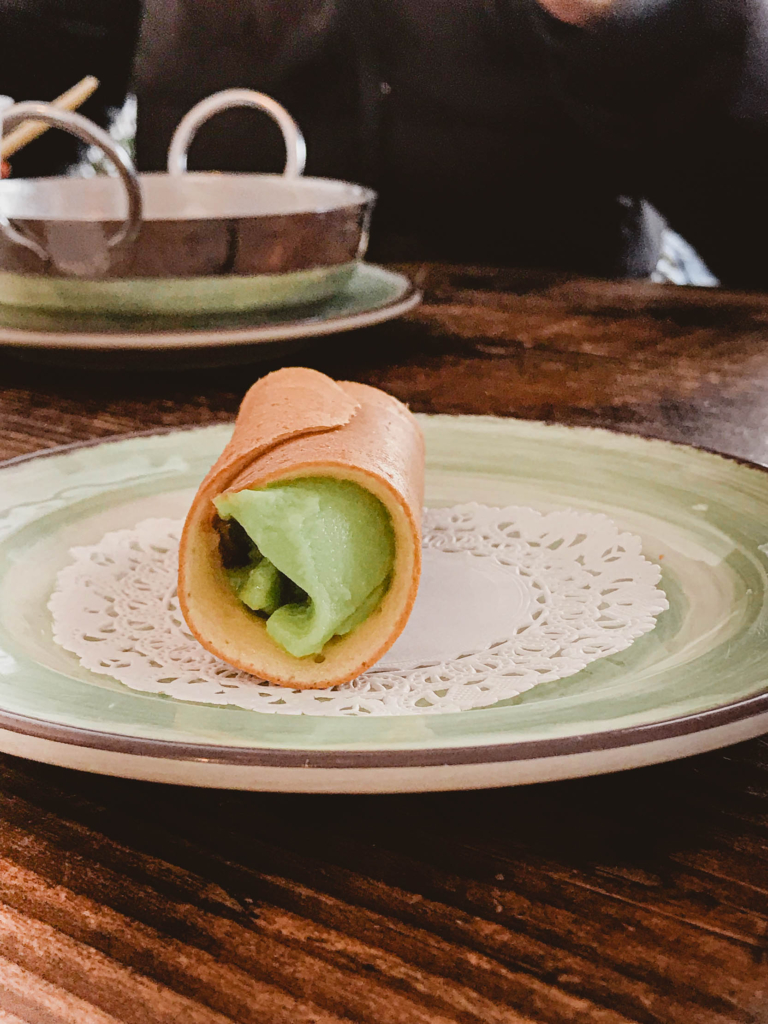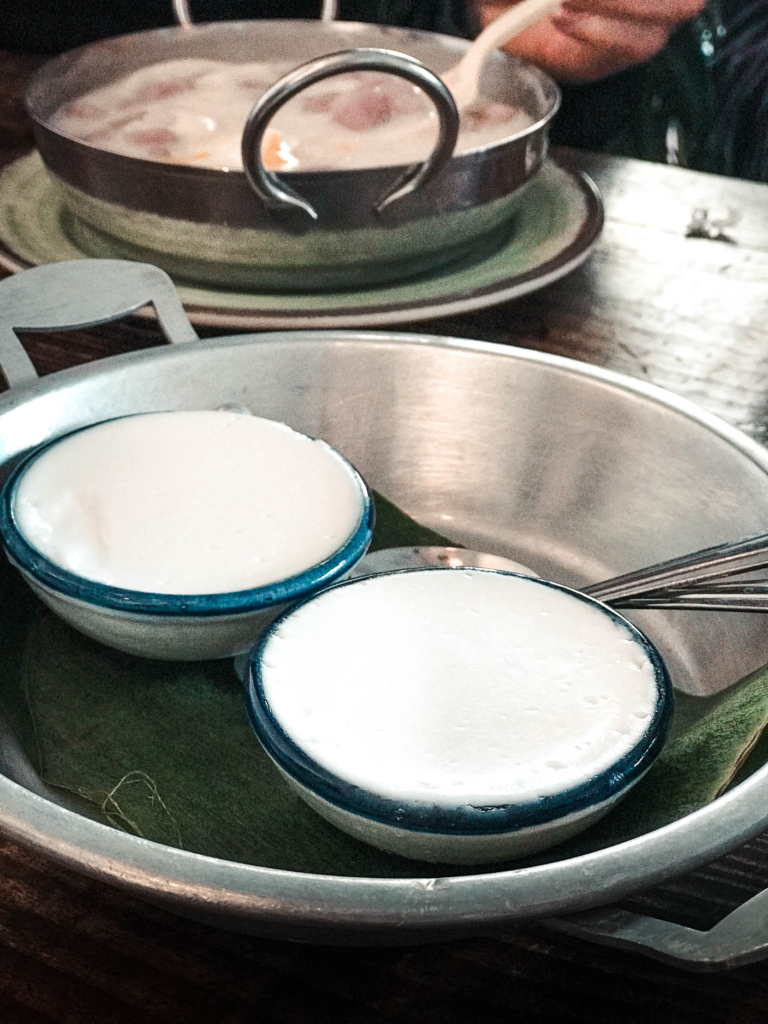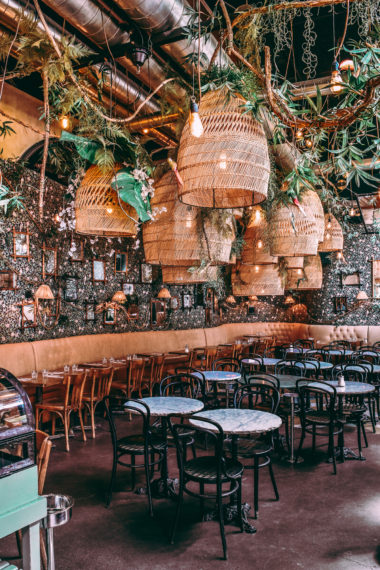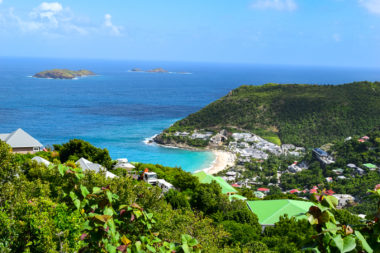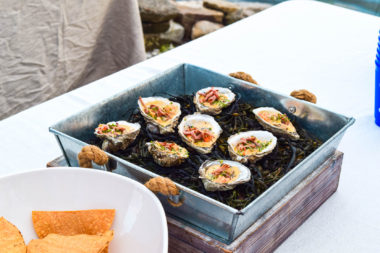Inspired by an AFAR article, I relived my own Queens, NY food tour alongside AFAR Editors…here’s what it was like.
About a year ago, AFAR came out with a feature about Queens, NY, one of the most ethnically diverse places on Earth where over 130 languages are spoken. For those who don’t know, I work for AFAR Media full-time. Last March, I had the amazing opportunity to join contributing editor Anya von Bremzen, who wrote the feature, and AFAR Editor Jenn Flowers on a deep dive of this diverse borough! Following this Queens, NY food tour you’ll walk away with a “taste” of why Queens is so unique and why it has been called the most ethnically diverse place on earth. The Queens, NY food tour took me to 6 different places that served a diverse array of food from Nepalese to Bangladeshi, Mexican, Japanese, and Thai.
1. Potala Restaurant (Nepalese)
What we tried: Butter tea
The first stop on the tour was at Potala Restaurant. Nepalese restaurants are popular in Queens, so are a must on any Queens, NY food tour. While here we stopped for a cup of butter tea. I had never heard of butter tea and just the sound of it made the hairs on my arms stand up. It made me think of a melted cup of butter! But it wasn’t exactly that. Butter tea is frequently drank in the Himalayan regions of Nepal, Bhutan, India and Tibet among other Western regions. It keeps locals in these regions, who spend the majority of their days outside in the brutally cold and thin air, warm. Unlike other teas, butter tea is salty, not sweet. The tea is made using black tea from tibet mixed with yak butter and milk, not cow. It’s definitely an acquired taste, but I can see how after a few sips you can learn to love this Nepalese beverage!
2. Nepali Bhanchha Ghar (Nepalese)
Nepali Bhanccha Ghar was just a few steps from Potala. They are known mainly for their momos, or a Nepalese form of dumplings. One of the best parts about food tours is taking the time to go behind-the-scenes and get to know the stories of the local chefs. Nepali Bhanccha Ghar is one of these places. The locale was started by Yamuna Shrestha and his brother who fled Nepal to escape the decade-long civil war. Here their cuisine made a huge impact in Flushings and specifically Jackson Heights. The locale has a trophey–a yak-hide belt with a stone from Mount Everest–hanging in their restaurant from when they won Best Momo from the 2017 Momo crawl. The locale is very intimate and small, don’t expect a 5-star dining experience, but do expect to be swept back to Nepal. Beautiful images and decor bring the destination to life, the staff is local, and the food is all handmade right in front of your eyes.
What we tried: Soup momo or Jhol momo
At Nepali Bhanccha Ghar you can choose between momo or soup momo, aka jhol momo. On this cold March day, we chose jhol momo. Momos are always stuffed with either beef or chicken, and if you choose the soup it’s a mix of tomatoes, sesame paste, and chicken broth. The jhol momo definitely has a kick to it, but it’s really not that spicy. Nepali momos typically have more spice and flavor to their milder Tibetan counterparts. Even if you don’t like spicy food, I highly recommend it! It’s really not that spicy at all and they’ve won awards for their momos, so you can’t skip out on them during a Queens, NY food tour. Plus they are only $7 so no excuses here.
What we tried: Goat sukuti
Also known as air dried goat jerky. You have the option to order beef as well, but many people, and I agree, say the goat is better. The consistency is tougher and chewier than your everyday meat. It’s marinated with spices, usually ginger, garlic, red onions, cumin, coriander, and chiles, so like a lot of other Himalayan dishes it has a bit of a kick to it, but nothing like Indian food. It’s definitely on the milder side.
What we tried: Sel Roti
We couldn’t leave without trying their $1 dessert, sel roti. Sel roti is a skinny large doughnut made of crushed rice, sugar, and ghee (a type of butter) batter. They are crispy on the outside and soft as a cloud on the inside. The staff makes them just behind the counter. They sit on a stool, pour the batter into an oil fryer and the batter immediately turns into a doughnut somehow, like magic! They then sit there for a few minutes and fry it before serving them piping hot.
3. Merit Kabab Dumpling Palace (Bangladeshi)
What we tried: Mango Lassi and Sweet Potato Samosa
After visiting two Nepalese locales it was time to change up the scene. We headed for Bangladeshi food at Merit Kabab Dumpling Palace. Ironically, the front of the store is Pakistani while the back is Tibetan. It’s normal spaces in Queens to be shared, so you’ll come across diverse stores multiple times as you continue to explore the area. Their mango lassi located in the front is thick and chilled, it tastes just like a mango smoothie but better. For those who don’t know lassi is an Indian beverage made of fruit, yogurt, water, and sometimes spices. It’s a perfect summer beverage, but is also a great companion to subdue any spicy Indian foods you may be consuming. We also ordered a sweet potato samosa, which is a fried or baked pastry with a savoury filling, such as spiced potatoes, onions, peas, meat, or lentils. The shell was crispy and flaking and the filling was definitely unique in flavor. It’s literally just $1, so you can’t miss out on the samosa!
4. La Esquina Del Camaron Mexicano (Mexican)
La Esquina Del Camaron Mexicano is like a speak easy Mexican locale. It’s hidden at the back of a smoke shop, so is very hard to find. It’s name literally translates to “the shrimp corner” and they serve some of the most banging shrimp cocktails you’ll ever have. The space is small with only one wooden bench and table, so come early or take it to go.
What we tried: Shrimp cocktail
What makes this shrimp cocktail so unique? It’s made with the owner, Mr. Rodriguez’s, homemade tomato sauce, onions, lime, a touch of olive oil and clam juice (an alternate for oyster juice which is what he really uses at home in Mexico, but is not available in Queens). The shrimp cocktail is embellished with cilantro and slices of avocado creating a beautiful ombre cocktail waiting to be mixed. The combination is a sweet, yet tangy, meaty, and salty concoction that whisks you back to Mexico.
5. 969 NYC Coffee (Japanese)
What we tried: Matcha, Pork Katsu Onigirazu, Onigiri
This place had a special place in my heart because it took me back to my roots in Japan. 969 NYC Coffee sounds like an ordinary coffee shop, but is actually completely Japanese. It was started by Oda who learned to cook in a 5-star kitchen in Tokyo, Japan. He came to the US with a dream to own his own business and opened the coffee shop in Jackson Heights in 2016. Here you can buy traditional Japanese snacks or each local delicacies.
Onigirazu is a new innovation in Japan. It’s an onigiri in the shape of a sandwich with layers of the usual, rice (instead of bread), seaweed, and pork katsu as pictured above. Oda also creates adorable heart shaped onigiri stuffed with various fillings. We couldn’t complete our meal without a cup of matcha to warm us up.
6. Khao Nom (Thai)
Of all the stops the last one on our Queens, NY food tour had to be my favorite. Maybe it’s because I have a sweet tooth, but the desserts we tried here were like nothing I’ve ever tried before. Khao Nom is a modern and warm atmosphere with amazing food that extends beyond desserts, but for the purposes of concluding our tour, we stuck to the sweet stuff. I have to admit, I had never tried Thai desserts before in my life so was very curious to see what they were made of. Khao Nom was started by Saralai Sarapaivnit, or Jackie, who moved to the U.S. and realized there was a lack of chilled and hot Thai desserts. So she opened up Khao Nom to fill that void and it has been a raging success ever since.
What we tried: Tub tim krob and Purple lemonade made with butterfly pea
We started with tub tim krob. This cold soup-like dessert is made of purple pandan-jelly bits (pandan is a plant) bathing in a sweet coconut milk with pieces of crunchy water chestnut. The dessert was accompanied by purple lemonade with butterfly pea. Butterfly pea is a time of flower that is actually considered holy in India and is used to give the lemonade its natural purple color. The purple lemonade was a bit too sweet for my tastes but the tub tim krob was perfect.
What we tried: Bua Loi Phuak
Now the description may turn you off, but imagine a tapioca-like pudding with sweet coconut milk. This warm dessert is a sensory delight both to the taste and to the feel with it’s mix of chewy and crunchy food. It’s made with taro rice balls, a tropical plant that tastes almost like tapioca but has the consistency of gnocchi, and you can find a pouched egg in the middle of the dessert. It’s incredibly sweet and unexpected and was by far my favorite dessert at Khao Nom.
What we tried: Thai crepe with pandan filling and Coconut pudding
Lastly, we were served a thai crepe made with more pandan fillings and a coconut pudding. The coconut pudding was of course made with what at the bottom? Pandan again! Both equally as delicious and unforgettable. Khao Nom’s dessert options were so fast, I don’t think I could come here and make room for a main meal as well!
The food tour was fun, informative, and of course delicious, but like all things at AFAR it went beyond just food. This Queens, NY food tour inspired by AFAR gives you a taste of the neighborhood and its diverse population all in one day.
Follow SVADORE on:
